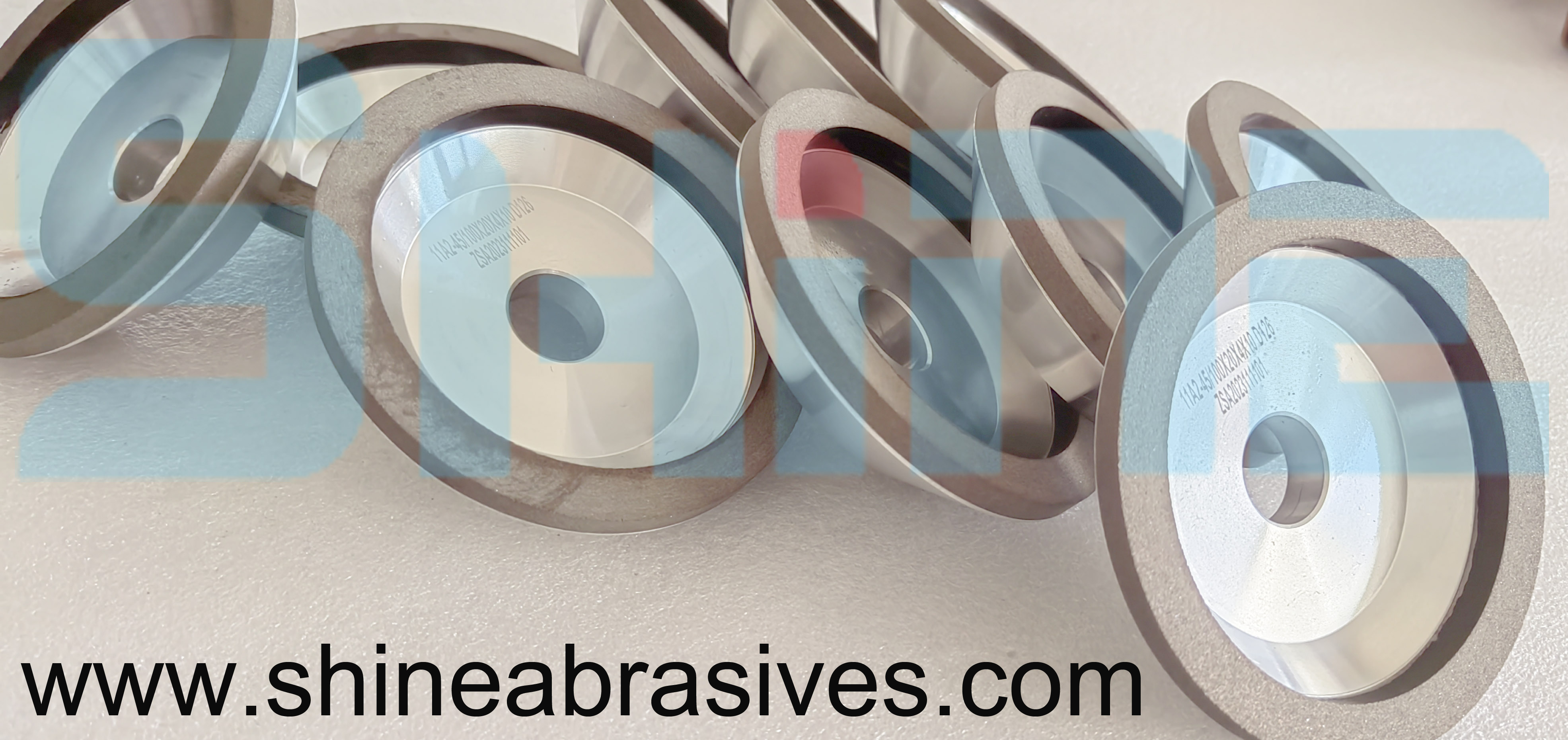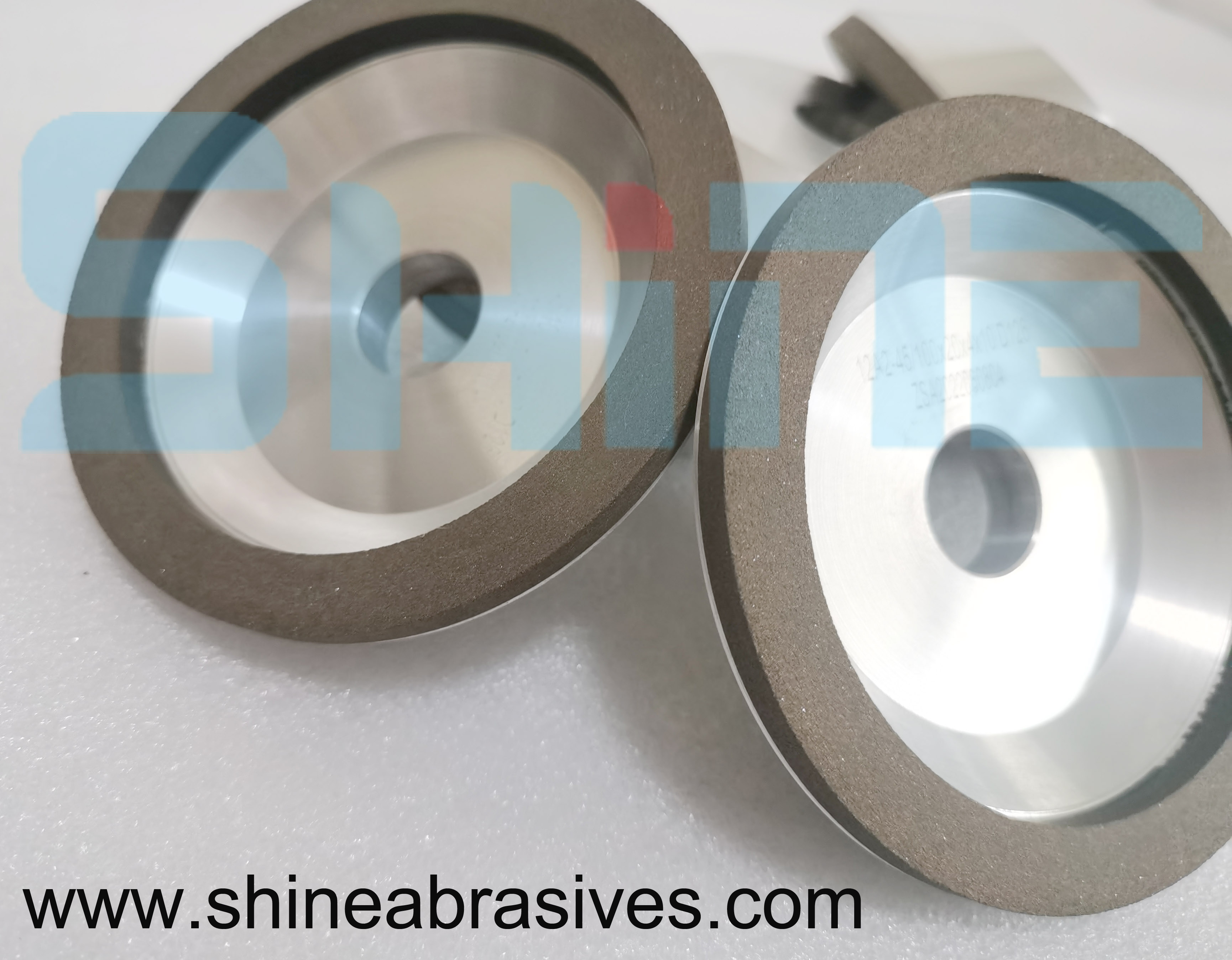Products
- Resin Bond Diamond Wheels (19)
- 1A1 Diamond Wheels (9)
- CBN Sharpening Wheel (18)
- Centerless Grinding Wheels (4)
- 1A1R Diamond Wheels (5)
- Electroplated Diamond Wheels (6)
- Electroplated Diamond Tools (6)
- Metal Bond Grinding Wheels (14)
- PCBN Tools (8)
- CNC Grinding Wheels (4)
- Vitrified Bond Wheels (7)
- Diamond Dressing Tools (7)
Contact Us
Tel:+86371-67129055 Mr Li: 15003895611
Fax:+86371-67129055
Email:shineabrasives@vip.163.com
News
How to achieve optimal grinding of the grinding
The grinding performance of the grinding wheel not only depends on the structural characteristics of the grinding wheel, such as abrasive grains, particle size and hardness, but also depends more on the morphological characteristics of the grinding wheel surface. The surface topography characteristics of the grinding wheel refer to the instantaneous state of the cutting edge of the abrasive grains on the surface of the grinding wheel, also known as instantaneous characteristics, such as the distribution of the cutting edge of the abrasive grains, the wear, breakage and shedding of the abrasive grains, and the blockage of the chip space. The instantaneous characteristics change with the grinding time during the grinding process. Therefore, the morphological characteristics of the grinding wheel must be reasonably evaluated. In order for the grinding wheel to obtain good grinding performance, it is necessary to reasonably match the structural characteristics and morphological characteristics of the grinding wheel according to the specific grinding conditions, so that the grinding surface of the grinding wheel can reach the best state.
Evaluation of grinding wheel topography characteristics
Geometric parameters of the abrasive cutting edge There are many abrasive cutting edges of different sizes and randomly distributed on the surface of the grinding wheel. In order to describe the geometric characteristics of the abrasive cutting edge, the geometric parameters of the abrasive cutting edge can be defined: the rake angle gg of the grinding edge, Relief angle ag and grinding edge radius rb. Obviously, the shape and size of the abrasive grains and their orientation on the surface of the grinding wheel determine the geometric parameters of the grinding edge, which in turn affects the cutting performance of the grinding edge.
The shape of the abrasive cutting edge is extremely irregular. For the convenience of analysis, the shape of the abrasive grain can be idealized. The simplified abrasive cutting edge classification is as follows:
(1) Cone or pyramid shape; this shape is easy to form when rough dressing is performed or the hardness of the grinding wheel is low;
(2) Spherical shape; fillet radius is 10~20um;
(3) The conical shape of the rounded tip: the result of abrasive scratches. When the cutting depth of the abrasive grain is large, the cutting effect is close to a conical shape; when the cutting depth is small, the cutting effect is close to a spherical shape;
(4) Flat-top conical shape: The shape in which the top of the abrasive grain is worn away. This shape is easy to form when the hard dressing lead of the grinding wheel is small.
Considering the sharpness of the cutting edge of the abrasive grain, the cone or pyramid shape (1) and the rounded cone shape (3) with rounded tips are close to the rod shape of the actual abrasive grain and have better sharpness; the spherical shape (2) and the round top shape The taper shape (4) is close to the block shape and wear rod shape of actual abrasive grains respectively, and has poor sharpness. The smaller the size of the abrasive grain and the smaller the tip angle eg of the cutting edge of the abrasive grain, the better the sharpness of the abrasive grain. The direction and position of the abrasive grains on the working surface of the grinding wheel are randomly distributed. From a statistical point of view, the orientation of the abrasive grains has little effect on the front and rear angles of the grinding edge. The rake angle of the grinding edge mainly depends on its tip angle eg. Generally, the smaller the tip angle eQ of the abrasive grain, the larger the rake angle gg of the grinding edge.


